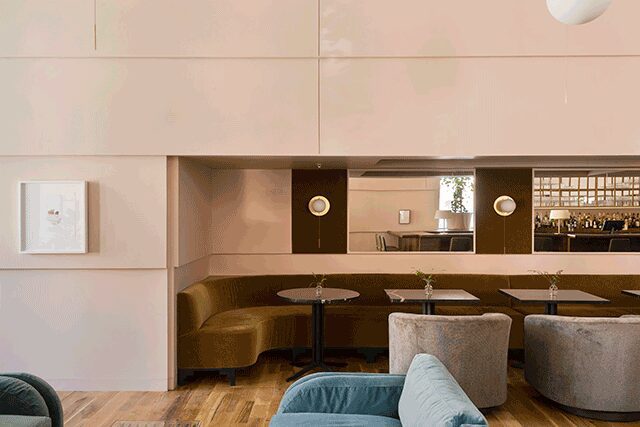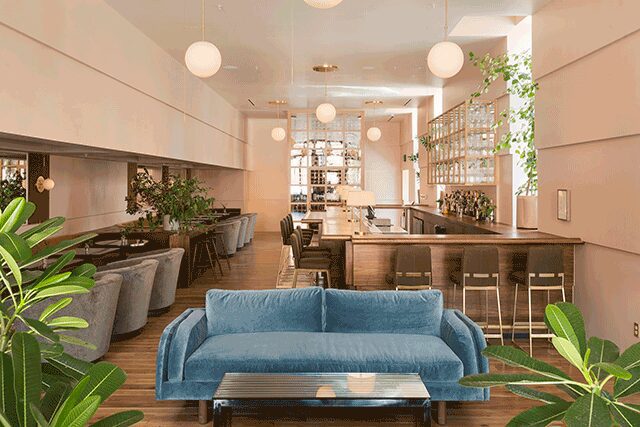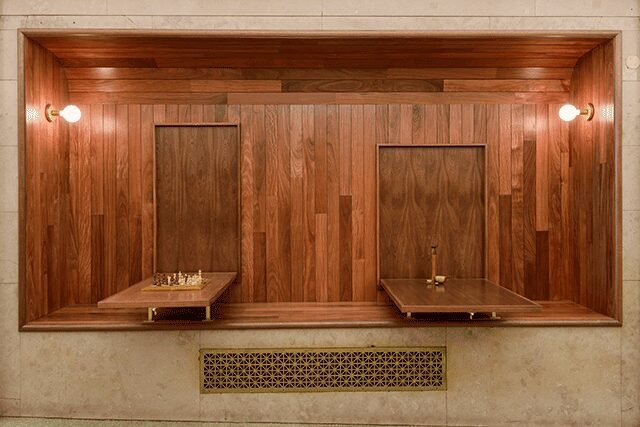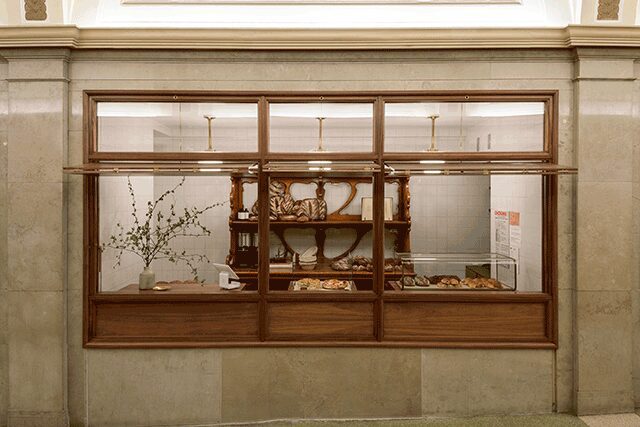As close friends and classmates from the Rhode Island School of Design, forming a design studio was a natural step for architects Ryan Mahoney, Robert Highsmith, and Stefanie Brechbuehler. But beyond friendship, what unites the Brooklyn-based trio (also with an office in Charleston, South Carolina) is what Highsmith considers a “meticulous and sensitive approach toward placemaking.” From product design to development and manufacturing, the multidisciplinary studio takes a bespoke approach to every project, creating highly tailored, context-driven environments. Their three most recent eateries showcase their signature restrained sensibility when it comes to reinventing old spaces.
Tradd’s
The restaurant’s location within the historic Roper-Melcher Building in downtown Charleston presented both the inspiration and the challenge for the team. “We felt it was crucial to reference and maintain the building’s original aesthetic in our design,” explains Highsmith. Triple hung windows, painted wood paneling, coffered ceilings, and antique heart pine flooring ensure the “new space both complements its historic shell and functions for today.”
Vintage
The design of Tulsa, Oklahoma wine bar Vintage was influenced as much by the Art Deco period as the historic building’s pre-existing bones. “Construction called for many careful decisions to achieve this sleek, geometric interior,” Highsmith recalls. Subtly steeped walls painted in a chalky blush reflect the period’s clean lines and soft forms. A long velvet banquette and walnut bar anchor the walls, leading to the wine tower, the centerpiece of the space. Handcrafted by a local millworker, the wood and glass structure holds more than 500 bottles and appears to float in space.
Arcade
Arcade occupies the lobby of the Merchant’s Square building in New York’s Tribeca neighborhood. To accommodate the slanted floor, Workstead designed the bakery as a series of alcoves, each with a distinct purpose. Rich mahogany millwork and paneling unite the separate spaces, including the clever and unexpected fold-down tables that “complement the rich, warm aesthetic of the space’s architectural bones,” says Highsmith.






